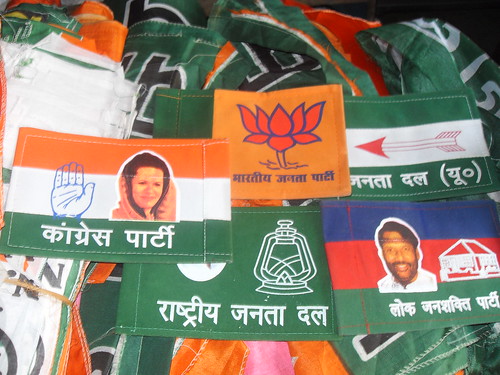By Soroor Ahmed, TwoCircles.net,
When the Bharatiya Janata Party performed badly in the August 21 by-polls in Bihar––it could win only four out of 10 seats––it was attributed to the coming together of RJD, JD(U) and Congress. But how will the BJP explain losing three out of nine seats in prime minister Narendra Modi’s home state of Gujarat, three out of four in Rajasthan and eight out of 11 in Uttar Pradesh. After all the BJP-led alliance had won 124 out of 131 Lok Sabha seats in these three states in the parliamentary election held in May 2014.
Today it could win only 10 out of 24 Assembly seats in these three states. In all 33 Assembly and three parliamentary constituencies went to poll. Twenty-six of them were in the hands of the BJP. It could win only 12. The only good news is that it could win one seat each in West Bengal and Assam.

The Samajwadi Party, the BJP and the Telangana Rashtriya Samiti retained their Lok Sabha seat.
Never had any party in India lost so much by-elections within four months of winning a thumping majority. In July it lost all the three Assembly seats in Uttarakhand. Than it lost in Bihar. The party’s performance in Karnataka, Madhya Pradesh and Punjab too was far from satisfactory. Now came the results of September 13 by-polls.
The irony is that in UP the ruling Samajwadi Party––often a butt of criticism in the media––did so well in spite of the fact that the Bahujan Samaj Party did not field its candidate. As in the last Lok Sabha election this time too its Dalit votes largely went to the BJP.
In contrast, the backward castes, which too voted for the BJP in a big way in Parliament election, largely preferred Samajwadi Party this time.
What has made the BJP leadership sit up and ponder is that the party has performed so badly this time in spite of the fact that it withstood the Samajwadi Party wave in these 11 seats in 2012 Assembly election. Then how it lost eight of them this time? Not only that the BJP lost in one of the Asssembly segments of Benaras from where Narendra Modi won by a big margin in May.
In Bihar the BJP could have lost because of the grand alliance between Lalu Prasad and Nitish Kumar, but in UP the Samajwadi Party managed to win in spite of, what many observers feel, clandestine BJP-BSP understanding.
If in UP the BJP won 71 seats and its ally two, in Gujarat and Rajasthan it made a clean sweep. Yet in four months it lost so badly in these two states. Even in Maninagar, vacated by Narendra Modi, the victory margin of the saffron party was much less. The Congress managed to win one of these three seats after 21 year.
In UP the opposition Samajwadi Party had a big leader in the form of Mulayam Singh Yadav, who helped revive the party, but how is it that in Gujarat, where the Congress has no such state leader, it managed to snatch three seats from the BJP within a short time of such a tremendous wave. What happened to all these tall claims of development? Was it just a propaganda? Or something else.
In Rajasthan at least the Congress has big names like Ashok Gehlot and Sachin Pilot. But here too the BJP swept to power with overwhelming majority nine months back.
The media pundits were quick to attribute the defeat of the BJP in UP to its failure to capitalize on its love-jehad campaign and communal polarization. But they failed to explain as to why the party suffered setbacks in Gujarat and Rajasthan, the two BJP bastions.
The BJP leaders may downplay the defeat by stating that Assembly by-polls are held on the local issues and has nothing to do with the performance of Narendra Modi. But they are speechless when asked how is it that they give credit to Narendra Modi for the victory in Delhi University Students’ Union election, yet say that the Assembly and Parliament by-polls are held on the local issues and has nothing to do with the performance of the NDA government.
The truth is that in spite of good marketing, the performance of the new government is far from satisfactory––in many ways worse than Manmohan government. But the media is not highlighting those aspects. Today the BJP is paying the price for heightening the expectation of the people too much before the Lok Sabha poll.
The biggest problem with the BJP is that very often public opinion makers in the media fail to analyse its defeat in the proper perspective, though its victory is much more public ized.
A decade has passed yet we are groping in the dark as to what actually led to the surprise defeat of Atal Bihari Vajpayee led government in 2004 at the hands of Sonia Gandhi’s Congress which was nowhere in contest till the final moment.
We need to probe this surprise aspect more deeply. Love-jehad and communal riots might have not worked in UP, but what has gone wrong in Gujarat and Rajasthan All the TV channels and print media discussed just the rout in UP, but not in these two other strongholds of the BJP.
If one person, Narendra Modi, is given all the credit for the victory, by that logic the same person should be held responsible for the bad show of the party. But the BJP would not like to accept this fact.

